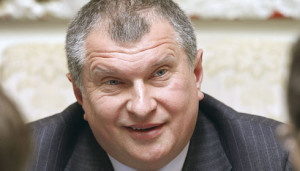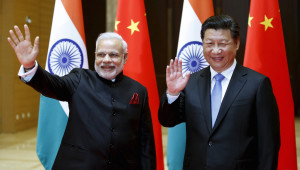
As it often happens in movies, a multi-episode crime thriller entitled Bashneft that began in September 2014 with the arrest of the once-mighty Vladimir Yevtushenkov, head of the Sistema corporation, has ended in a prosaic finale that we had predicted from the very beginning: Bashneft has been expropriated from private owners and is being transferred to the state-run Rosneft. Despite public protests by ministers and even the deputy prime minister of Russia, the all-powerful Rosneft chairman Igor Sechin got what he wanted: Prime Minister Medvedev signed an ordinance providing for the sale of the controlling stake in Bashneft to Sechin’s oil empire for $5 billion — without any tender. This is $300 million above the minimum price that the government was prepared to accept for the privatization of its shares in Bashneft, which prompted Putin to observe that Russia’s deficit-ridden budget is in dire need of this money. The federal budget will now undoubtedly receive it, but this leaves the question of where Rosneft had gotten it from, since almost 70 percent of its own shares belong to the Russian state.
As the result of sanctions imposed by Western countries in response to the annexation of Crimea and the shooting down of the Boeing by a Russian missile, Rosneft is practically unable to borrow on the international capital markets. Consequently, just as with the purchase of assets of the Yukos Oil Company that had been forcibly expropriated from private investors and bankrupted, Sechin went to look for money in the East — and found it there in exchange for oil. The only difference is that Chinese companies got guaranteed oil supplies from Rosneft for a fixed low price for several years in exchange for the billions of dollars used for purchasing former Yukos assets from the state; while in order to find $5 billion needed for the purchase of Bashneft, Sechin made a deal with the Indians. According to RBC, several Indian oil companies purchased shares in Vankorneft and Taas-Yuryakh Neftegazdobycha from Rosneft; this money will now go toward paying for Bashneft shares.
Vankorneft, almost half of which is now owned by the Indians, holds licenses for the development of the promising Vankor oilfield, that was discovered in the 1990s and that is one of Russia’s largest; its initial recoverable reserves amount to 524 million tons of oil, and more than 100 million cubic meters of natural gas. The reserves of the Taas-Yuryakh oilfield amount to 134 million tons of oil, and some 150 billion cubic meters of natural gas.
Sechin talks of a “synergy effect” from the purchase of Bashneft, since it controls comparable reserves of carbohydrates: 593 tons of oil, which are all located in the European part of Russia and are thus easier to deliver to consumers. Yet Bashneft’s oilfields are old, there is little oil left in them, it is becoming harder to extract and will not last long. Oil from the little-developed Vankor and Taas-Yuryakh oilfields in eastern Siberia, meanwhile, will eventually flow to China and India through a new pipeline that is being built for them by Transneft. Sechin’s synergy clearly has Chinese origins.

Once again, Sechin has undoubtedly achieved a personal victory: Russia’s biggest oil company that he controls is becoming even bigger, and no privatization that is being planned by the government can threaten it. While the government is planning to privatize a 19.5 percent stake in Rosneft before the end of 2016 — for which the Russian budget will receive $11 billion — there are no outside buyers for these shares. Rosneft itself will buy out its shares from the state with “its own” money. Otherwise, this money would in any case have gone to the Russian budget in the form of dividends for the state’s 70-percent stake in Rosneft. This is what privatization, Sechin-style, looks like.





